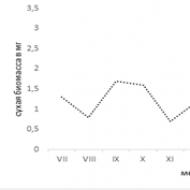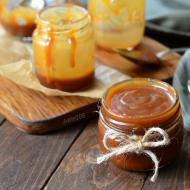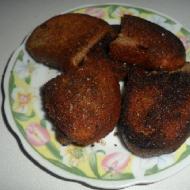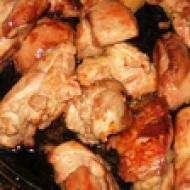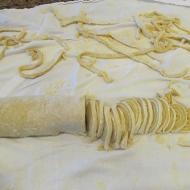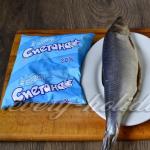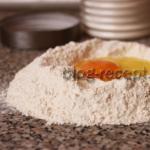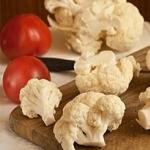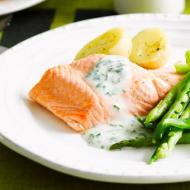
Digestive juices and their study. Doctor of Pedagogical Sciences rgufxsmith Marina Zhiyar: when I give two marks, students say to me “thank you!” How to attract students to classes
The walls of the human digestive canal contain a huge number of glandular cells that produce digestive juices. Entering the cavity, they mix with chewed food, entering into complex chemical interactions with it. Typical digestive juices include saliva and gastric juice.
Being a transparent, slightly alkaline liquid, saliva contains mineral salts and proteins: amylase, maltase, mucin, lysozyme. The first two proteins are involved in the breakdown of starch. Moreover, amylase breaks down starch into maltose (individual fragments), and then maltase breaks it down into glucose. Mucin gives saliva viscosity, gluing the food bolus, and lysozyme has a bactericidal effect.
The mucous membrane of the stomach secretes about 2.5 liters of gastric juice every day, which is an acidic, colorless liquid due to hydrochloric acid, containing the enzyme pepsin, which is responsible for the breakdown of protein into individual fragments and amino acids. The production of gastric juice is carried out using neurohumoral mechanisms.
Hydrochloric acid not only activates pepsin. Proteins are so complex that digesting them is a lengthy process. Acid destroys the hydrogen bonds that hold the secondary structure of proteins together, as well as the strong walls of plant cells, not to mention the destruction of connective tissue in meat; its quantity depends on the nature of the food. Hydrochloric acid kills bacteria. However, some bacteria can overcome the stomach's defense system and can cause ulcers.
Scientists became interested in the functioning of the digestive glands in the 19th century. So, in 1842, the Russian scientist V.A. Basov performed the following operation on a dog: he opened the abdominal cavity, made a hole in the stomach wall, into which he inserted a metal tube (fistula) so that one end was in the stomach cavity, and the other – outside, which allowed the experimenters to collect gastric juice. The wound around the tube was carefully sutured. The animal underwent the operation easily, which allowed V.A. Basov conducted a series of experiments during which the animal was fed a variety of foods.
Task 30 No. 1628
The table shows changes in insect dry mass (in milligrams) over the course of a year in a shrubland ecosystem in Argentina. The same data is reflected in the graph. Study the table and answer the questions.
1. What processes are associated with fluctuations in the number of insects?
2. What months are the peaks of insect reproduction?
3. Explain why the insect biomass fluctuates exactly as shown in the table and graph.

Task 31 No. 2258
A student at the Institute of Physical Education, Marina, goes in for equestrian sports. Every day after college she rides horses for 95 minutes. After training, a girl goes to have a snack at a fast food restaurant. Using the data in Tables 1 and 2, offer the student a menu that is optimal in terms of calories and contains maximum protein content from the list of proposed dishes and drinks in order to compensate for the energy costs of the workout. When choosing, keep in mind that Marina always orders an omelette with ham.
In your answer, indicate: the athlete’s energy consumption, recommended dishes that should not be repeated; amount of proteins; calorie content of lunch, which should not exceed energy expenditure during training.
Table 1
Table of energy and nutritional value of fast food cafe products
| Dishes and drinks | Energy value (kcal) | Proteins (g) | Fat (g) | Carbohydrates (g) |
| Double McMuffin bun, mayonnaise, lettuce, tomato, cheese, pork) | ||||
| Fresh McMuffin (bun, mayonnaise, lettuce, tomato, cheese, ham) | ||||
| Chicken Fresh Muffin (bun, mayonnaise, lettuce, tomato, cheese, chicken) | ||||
| Omelette with ham | ||||
| Vegetable salad | ||||
| Caesar salad" (chicken, salad, mayonnaise, croutons) | ||||
| Country style potatoes | ||||
| Small portion of French fries | ||||
| Ice cream with chocolate filling | ||||
| Waffle cone | ||||
| "Coca Cola" | ||||
| Orange juice | ||||
| Tea without sugar | ||||
| Tea with sugar (two teaspoons) |
Energy consumption for various types of physical activity
Task 31
Example number | |
Task 32
Example number | |
Option 1
29. Using the content of the text "Beekeeping", answer the following questions.
BEEKEEPING
From time immemorial, the bee became a pet of man, who provided the bee family with a suitable room for it and in return used the products it delivered: honey, wax and healing bee glue - propolis. Honey replaced our current sugar, and wax provided the best material for candles at that time.
In ancient times, people provided bees only with hollows of forest trees, where the bee colony settled. Such hollows were called “borti”, and this primitive method of beekeeping was called beekeeping. When extracting honey using this method, bee colonies were destroyed.
Later, as forests were cut down, beekeepers, instead of the previous beekeeping, began to organize special areas - apiaries, where bees were provided with special hives in the form of hollowed-out nests or logs that resembled the hollow of a tree. Essentially, these ancient hives were not much different from beehives, and the inner life of the bee colony remained invisible to the beekeeper. The beekeeper did not know the lifestyle of the domesticated animal he was dealing with. Man could not direct the activities of the bees at his own discretion, and by extracting honeycombs from the hive, he simply robbed the bees, causing enormous devastation in the bee family. This method of beekeeping did not allow the extraction of honey and wax on an industrial scale, since bee colonies often did not survive after collecting honey.
Therefore, at the beginning of the 19th century, a collapsible frame hive was designed, consisting of a box into which frames for honeycombs were inserted. It allowed the bees' products to be used without harming the hive population, since the frames filled with honey and sealed with wax were replaced with empty ones. Honey and wax were extracted without causing significant harm to the bee colony, and the process of producing beekeeping products became continuous. Special glassed hives, with the help of which it was possible to observe the activities of bees, made it possible to create a scientifically based doctrine about the life activity of bees - beekeeping.
1) What is the name of the type of hive in the form of hollowed-out nests that resembled the hollow of a tree?
2) With what type of hive is it possible to maintain the maximum number of bee colonies?
3) What beekeeping products are not mentioned in the text that modern people use? (Name one product.)
30. Using the table “Approximate daily water exchange of a person,” answer the following questions.
Table
Approximate daily water exchange of a person (in l)
1) How much liquid does the human body consume during the day?
2) In what substances is water released from the body?
3) Why is the amount of water received somewhat less than the water released from the body?
31. Using the data from the tables (pp. 11-12), complete the task:
A student at the Institute of Physical Education, Marina, goes in for equestrian sports. Every day after college she rides horses for 95 minutes. After training, a girl goes to have a snack at a fast food restaurant. Using the data in Tables 1 and 2, offer the student a menu that is optimal in terms of calories and contains maximum protein content from the list of proposed dishes and drinks in order to compensate for the energy costs of the workout. When choosing, keep in mind that Marina always orders an omelette with ham.
Please indicate in your answer: energy consumption of the athlete, recommended dishes that should not be repeated; amount of proteins; calorie content of lunch, which should not exceed energy expenditure during training.
32. Why should a person limit his sugar intake? Give at least two arguments
Criteria for assessing assignments option 1.
Task 29
Points |
|
elements: The answer to the first question. 1) Decks. The answer to the second question. 2) Collapsible frame. Answer to the third question. 3) Bee venom or royal jelly | |
The answer includes the three elements mentioned above and does not contain biological errors | |
The answer includes two of the above elements and does not contain biological errors. The answer includes the three elements mentioned above, but contains minor biological errors | |
The answer includes one of the elements listed above and does not contain biological errors. The answer includes two of the above elements, but contains minor biological errors | |
Wrong answer | |
Maximum score |
Task 30
Points |
|
The correct answer must contain the following elements: 2) Urine, feces, exhaled air, sweat. 3) Metabolic water is not taken into account in the table | |
The correct answer includes all the listed elements and does not contain biological errors | |
The answer includes two of the above elements and does not contain biological errors. The answer includes three of the above elements, but contains minor biological errors | |
The answer includes one of the elements listed above and does not contain biological errors. The answer includes two of the above elements, but contains minor biological errors | |
Wrong answer | |
Maximum score |
Task 31
Points |
|
The following are correct response elements: Energy consumption during training – 618 kcal. Ordered dishes: omelet with ham, Caesar salad, tea without sugar. Amount of proteins – 35 g; calorie content of the ordered | |
The energy consumption during training is correctly indicated, the ordered menu is given, the protein content and calorie content of lunch are indicated | |
The energy consumption during training is correctly indicated; a menu is given that corresponds to the caloric content task; The calorie content of lunch and the protein content are indicated, but the menu does not take into account the requirement that it should include an omelette with ham. The energy consumption during training is correctly indicated; a menu is given that corresponds to the conditions of the task, but the calorie content of lunch and/or protein content is not indicated or indicated incorrectly | |
Only energy consumption during training is indicated correctly. | |
Wrong answer | |
Maximum score |
Task 32
Students' responses to assignments option 1
Tasks 32
32 . Which part of the nervous system regulates fat metabolism? How is such regulation ensured?
Option 1
29. Using the content of the text "Beekeeping", answer the following questions.
BEEKEEPING
From time immemorial, the bee became a pet of man, who provided the bee family with a suitable room for it and in return used the products it delivered: honey, wax and healing bee glue - propolis. Honey replaced our current sugar, and wax provided the best material for candles at that time.
In ancient times, people provided bees only with hollows of forest trees, where the bee colony settled. Such hollows were called “borti”, and this primitive method of beekeeping was called beekeeping. When extracting honey using this method, bee colonies were destroyed.
Later, as forests were cut down, beekeepers, instead of the previous beekeeping, began to organize special areas - apiaries, where bees were provided with special hives in the form of hollowed-out nests or logs that resembled the hollow of a tree. Essentially, these ancient hives were not much different from beehives, and the inner life of the bee colony remained invisible to the beekeeper. The beekeeper did not know the lifestyle of the domesticated animal he was dealing with. Man could not direct the activities of the bees at his own discretion, and by extracting honeycombs from the hive, he simply robbed the bees, causing enormous devastation in the bee family. This method of beekeeping did not allow the extraction of honey and wax on an industrial scale, since bee colonies often did not survive after collecting honey.
Therefore, at the beginning of the 19th century, a collapsible frame hive was designed, consisting of a box into which frames for honeycombs were inserted. It allowed the bees' products to be used without harming the hive population, since the frames filled with honey and sealed with wax were replaced with empty ones. Honey and wax were extracted without causing significant harm to the bee colony, and the process of producing beekeeping products became continuous. Special glassed hives, with the help of which it was possible to observe the activities of bees, made it possible to create a scientifically based doctrine about the life activity of bees - beekeeping.
1) What is the name of the type of hive in the form of hollowed-out nests that resembled the hollow of a tree?
2) With what type of hive is it possible to maintain the maximum number of bee colonies?
3) What beekeeping products are not mentioned in the text that modern people use? (Name one product.)
30. Using the table “Approximate daily water exchange of a person,” answer the following questions.
=Table
Approximate daily water exchange of a person (in l)
1) How much liquid does the human body consume during the day?
2) In what substances is water released from the body?
3) Why is the amount of water received somewhat less than the water released from the body?
31. Using the data from the tables (pp. 11-12), complete the task:
A student at the Institute of Physical Education, Marina, goes in for equestrian sports. Every day after college she rides horses for 95 minutes. After training, a girl goes to have a snack at a fast food restaurant. Using the data in Tables 1 and 2, offer the student a menu that is optimal in terms of calories and contains maximum protein content from the list of proposed dishes and drinks in order to compensate for the energy costs of the workout. When choosing, keep in mind that Marina always orders an omelette with ham.
“SCIENCE TIME HOW TO ATTRACT STUDENTS IN PHYSICAL EDUCATION? Marina Golubyatnikova, Center for Pedagogical Education, Novokuznetsk Branch of the Institute...”
SCIENCE TIME
HOW TO INVOLVE STUDENTS IN CLASSES
PHYSICAL CULTURE?
Golubyatnikova Marina,
Center for Teacher Education
Novokuznetsk branch of the institute
Kemerovo State University,
Novokuznetsk
Email: [email protected]
Abstract Badminton is a new direction in the development of physical education of students. Its introduction into physical education classes at universities can not only become a solution to the issue of attracting students to physical education lessons, but also improve the health of young people in general.
Key words: physical culture, health, physical condition, students, badminton, university, healthy lifestyle.
Recently, the question has arisen about modernizing the subject physical education based on the inclusion in the physical education curriculum of additional sports that contribute to increasing the physical activity of students in universities, increasing the health-improving orientation of physical education lessons, as well as sports that increase the intellectual activity of the younger generation, aimed at increasing interest in physical education and sports.
Currently, badminton is being introduced into physical education curricula at the expense of the third hour of physical education on the basis of the order of the Ministry of Education and Science of the Russian Federation dated August 30, 2010 No. 889 “On amendments to the federal basic curriculum and model curricula for educational institutions of the Russian Federation, implementing general education programs approved by order of the Ministry of Education of the Russian Federation dated March 9, 2004.
No. 1312 “On approval of the federal basic curriculum and model curricula for educational institutions of the Russian Federation implementing general education programs”, as well as methodological recommendations of the Ministry of Education and Science of the Russian Federation “On the introduction of the third hour of physical education into the weekly volume of education”
SCIENCE TIME
workload of students in general education institutions of the Russian Federation.”Physical culture in a higher educational institution is an integral part of the formation of a comprehensively developed student personality. At the same time, it helps to optimize his physical and psychological state.
Therefore, the topic of this work is very relevant, as it touches on two important problems: why students are reluctant to attend physical education classes and how they can be interested in attending this subject. Many people do not understand the importance of this activity. After all, physical education reduces depression and improves mood due to the production of endorphins, the hormones of happiness. No matter how bad you feel before exercise, your outlook on life will certainly become more optimistic after doing it.
So why do physical education classes remain secondary and undesirable, while one in four students fake illness, deceive parents and teachers, and 15 percent forge a note asking for their release.
The answers, in my opinion, are very simple and prosaic. This is, firstly, a lack of self-confidence (every third student surveyed said that she was embarrassed by her figure), and secondly, a lack of interest and motivation.
I see the solution to this problem in the introduction of a way of conducting classes that would interest everyone - both girls and boys. I think that playing badminton can, at least not completely, partially solve this issue.
In badminton, two important qualities are realized - game and benefit. According to sports experts, badminton has a number of advantages that can be successfully used in education - it is accessible, exciting, not difficult to learn at the initial level, and also contributes to general physical development, improved coordination of movements, and development of intelligence.
In higher educational institutions, the massive development of badminton as a sport helps solve the main task facing the physical education movement: to achieve physical perfection of students, strengthen their health, distract them from bad habits, and instill healthy lifestyle skills.
All physical qualities - speed, flexibility, strength and endurance, as well as coordination - in a harmonious combination with versatile creative thinking are developed and improved in this game.
Badminton is a very compact sport that does not require large financial expenditures for the purchase of playing equipment. A playground can be equipped in any, even the smallest hall, courtyard or park. It can be carried out in the gym if available
SCIENCE TIME
appropriate conditions and in compliance with safety rules. It is also possible to conduct lessons of a combined type, for example, badminton athletics. It is allowed to conduct classes on learning to play badminton in the autumn-spring period in the open air. This game captivates with its simplicity. After the first lesson, the student practically masters the basics of the game and can play it independently.However, the more you play, the clearer the need to improve your game becomes. And this is attractive. The activity of a badminton player has a beneficial effect on his anatomical and physiological structure. Simplicity and accessibility make it possible for students of any gender and different physiological preparation to practice badminton. Entertainment and effective impact on the body predetermined the inclusion of this sport in the system of physical education of students in universities. The wide possibility of load variability allows the use of badminton as a rehabilitation tool in various groups of general physical training. It is also important to hold competitions among students - this is not about determining the best and the worst, but about training and developing physical qualities.
They should logically continue and complement the educational process, increasing the time for mastering and improving the actions and exercises studied in lessons.
Students must be taught to play and participate in competitions.
No matter how much we teach them the elements of the game in class, they will never learn if they do not participate in competitions. Students will have a much better understanding of the rules and intricacies of the game, feel more confident on the court and, very importantly, strive to play badminton whenever possible.
Competitors take the study of playing techniques and tactics more seriously in class, since competitive games allow them to understand why technical techniques must be performed in this particular way and not otherwise.
Why do you need to hold the racket in a certain way, and not the way you are used to in the yard, etc.
Student competitions are a necessary and mandatory element of the educational process.
It should be noted that a kind of medical direction has arisen in badminton, since the game of shuttlecock is used for medicinal purposes. Thus, in the Kislovodsk resort, badminton is widely used to treat people with cardiovascular diseases, metabolic diseases and nervous system diseases. The advantage of this game is that it is very easy to gradually increase physical activity - from minimal to more thorough. This game is not
SCIENCE TIME
burdens patients, but brings joy. Probably, the one who invented this game was a good psychologist. Physiologists say that playing sports helps you grow.Playing shuttlecock is an excellent remedy for fatigue. Perfectly relieves tension. Tracking a fluttering shuttlecock is useful gymnastics for the eyes.
As noted by the director of the Federal State Budgetary Institution “Moscow Research Institute of Eye Diseases named after. Gemgolts Vladimir Neroev, a game like badminton is really an effective way to both prevent and treat eye diseases. “The problem is that it is possible to achieve the desired therapeutic effect, but you have to play often. And the benefits of playing games in class once a week will be minimal. It makes sense to consider holding physical education lessons more often than once or twice a week.”
As a sport, it can also be recommended to people who want to lose extra pounds or simply lose calories. To do this, they do shaping, aerobics, cross-country running, etc. These activities are quite tedious and get boring quickly. And in general, forcing yourself to run regularly is very difficult. But badminton is a very exciting and interesting game in which you need to move a lot. In the process of getting involved, people do not feel tired or lose extra pounds. It is important to note here that all difficulties associated with physical activity are overshadowed by psychological emotions and experiences caused by the game itself.
Badminton is a very democratic sport. It can be done at any age. Of course, you won’t be able to achieve serious success in professional sports, but you can significantly raise the level of your game, since mastering technical elements is accessible to everyone.
This game is one of the most popular games. There is hardly a family that does not have rackets and shuttlecocks. Almost every person has ever touched these sports equipment. It is a public and useful game.
So, we can conclude that badminton is a new direction in the development of physical education of students. Its introduction into physical education classes at universities can not only become a solution to the issue of attracting students to physical education lessons, but also improve the health of young people in general.

